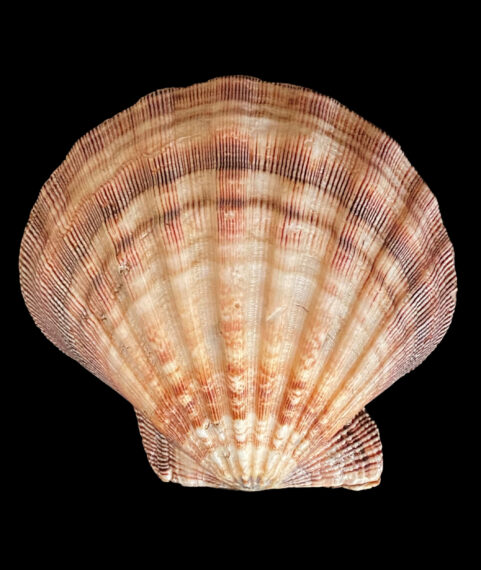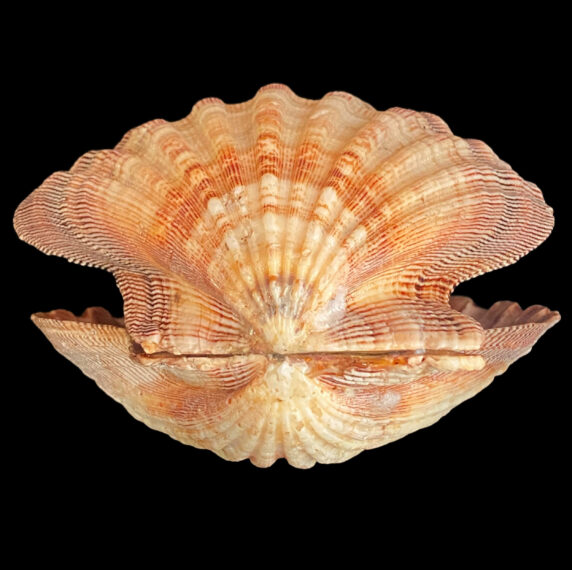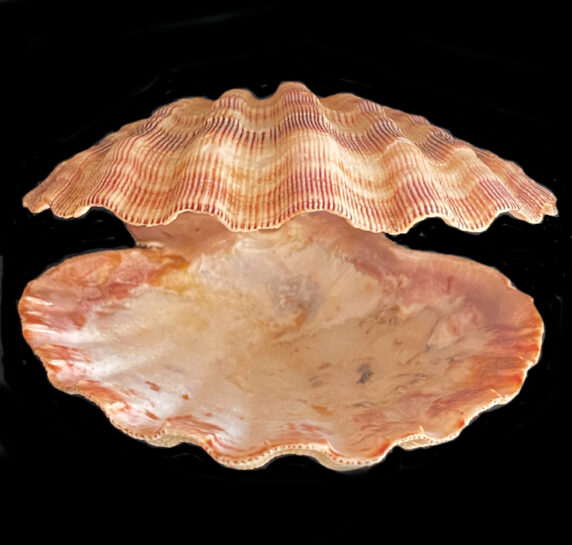Pacific Lion’s Paw Shell, Nodipecten subnodosus


 Pacific Lion’s Paw Shell, Nodipecten subnodosis. Shell collected off the beach at Punta Chivato, Baja California Sur, January 2023. Size: 12 cm (4.6 inches) x 12 cm (4.6 inches). Photograph and Identification courtesy of Colin Campbell, DVM, Punta Chivato, Baja California Sur.
Pacific Lion’s Paw Shell, Nodipecten subnodosis. Shell collected off the beach at Punta Chivato, Baja California Sur, January 2023. Size: 12 cm (4.6 inches) x 12 cm (4.6 inches). Photograph and Identification courtesy of Colin Campbell, DVM, Punta Chivato, Baja California Sur.
The Pacific Lion’s Paw Scallop, Nodipecten subnodosis (G.B. Showerby, I, 1835), is a bivalve mollusk that is a member of the Pectinidae Family of Scallops. They are also known as the Giant Lion’s Paw and Lion’s Paw Scallop and in Mexico as almeja mano de leon and peine catalina. The shells are sturdy, with rounded or fan-shaped valves, with pronounced auricles (ears) at the hinge and broadly rounded ribs which are often marked with nodules or knobs. The exterior of the shell is covered with many radiating fine lines. They vary significantly in color and can be gray, orange, pink, or reddish-brown in color. The Pacific Lion’s Paw is the largest of the free-swimming scallops found along the Baja Peninsula. The Pacific Lion’s Paw Scallop Shell and can reach a maximum of 20.3 cm (8.0 inches) in length and 18.8 cm (7.4 inches) in height.
The Pacific Lion’s Paw Scallops are found resting on sand or mud bottoms from the intertidal zone to depths up to 110 m (360 feet). They range from Southern California to Peru, including the Revillagigedo Islands and the lower two-thirds of the Sea of Cortez. The Pacific Lion’s Paw Scallops are edible and are farmed, fished and sold commercially.
Synonyms include Lyropecten intermedius, Lyropecten subnodosis, Pecten arthriticus, and Pecten subnodosis.